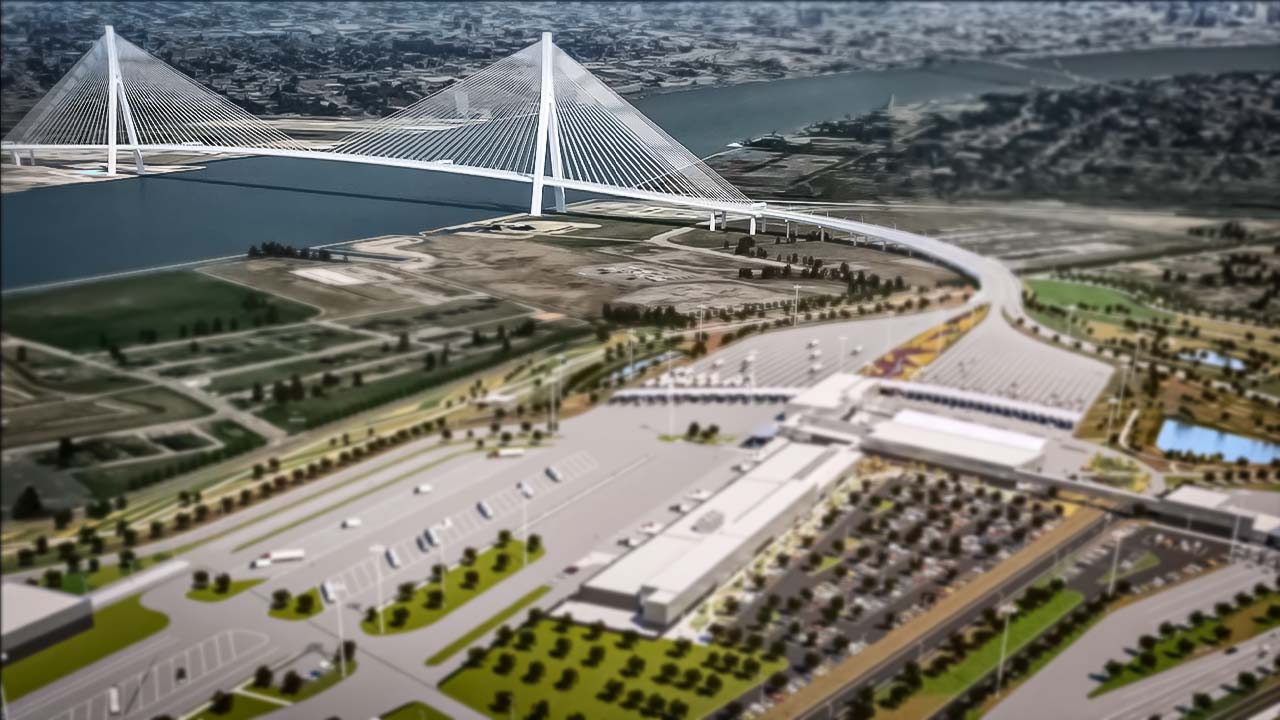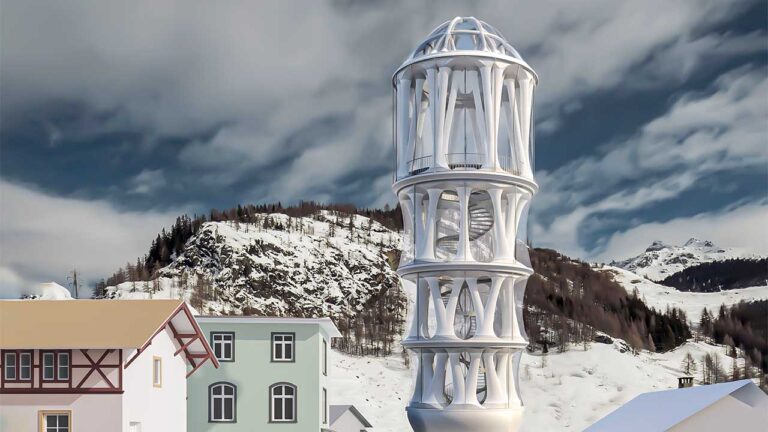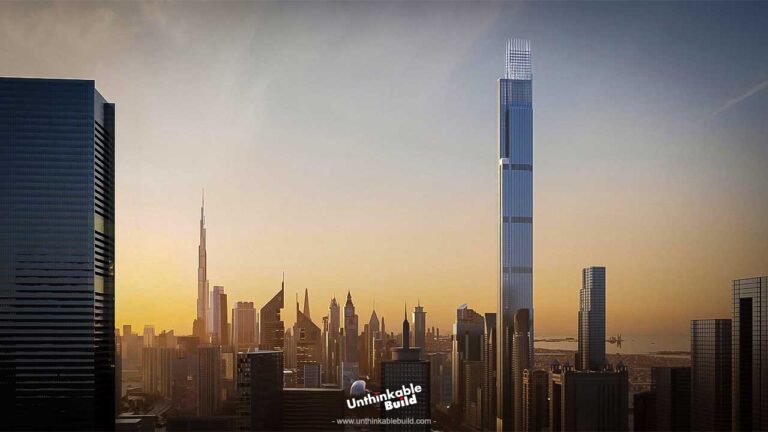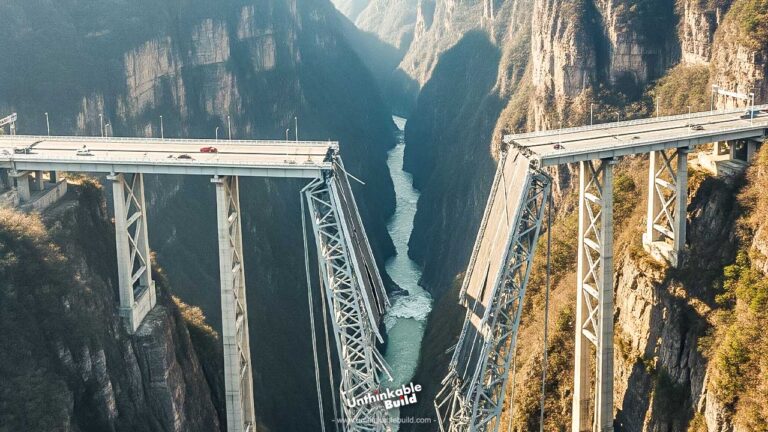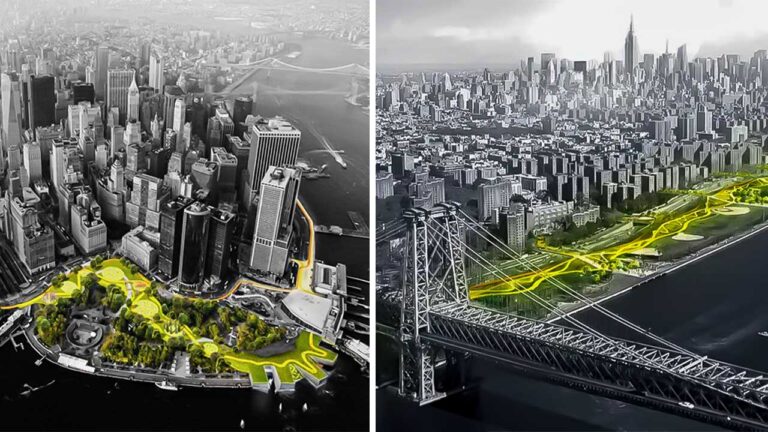Gordie Howe International Bridge Longest Cable-Stayed Bridge in North America
Situated at the heart of U.S.-Canada trade, the Ambassador Bridge stands as a symbol of connectivity and commerce between these two North American neighbors. This four-lane suspension bridge, spanning the Detroit River, serves as an indispensable conduit for the flow of goods and services, accommodating over 10,000 commercial vehicles on a typical weekday. With a remarkable 92-year history, the Ambassador Bridge has weathered the tests of time, but its age and the ever-increasing demands of international trade have raised concerns about its long-term viability.
Owned by the influential Mouron family, this bridge plays a pivotal role in the economic ties between the United States and Canada. Approximately 27% of the trade between these two nations crosses its span, showcasing its paramount importance in facilitating cross-border commerce. However, traffic stoppages can cost both countries millions of dollars per day. For example, in February 2022, a group of Canadian truck drivers, protesting against COVID-19 vaccine mandates, parked their vehicles bedecked with Canadian flags across the road leading to the Ambassador Bridge for nearly a week, causing an estimated loss of $300 million per day.
These issues have underscored the fragility of this vital link in the supply chain, prompting Canadian authorities, in collaboration with various stakeholders, to initiate a comprehensive study aimed at diagnosing the challenges faced by the Ambassador Bridge and devising the essential infrastructure solutions needed to ensure the seamless continuation of this critical trade route.
Also Read: Afghanistan’s Biggest and Most Expensive Mega Projects
In 2001, the Canadian government, in collaboration with their American counterparts, recognized that the Ambassador Bridge, which had long served as the crucial link connecting the cities of Windsor, Ontario, and Detroit, Michigan, would no longer be able to accommodate the projected traffic volumes of the future. They needed to find an alternative solution to address the challenges associated with the border crossing and the necessary infrastructure upgrades.
The response to this challenge came in the form of the Gordie Howe International Bridge, with a cost of 5.7 billion Canadian dollars. This state-owned bridge, spanning 2.5 kilometers with six lanes, is located just a few miles away from the Ambassador Bridge and is currently under construction, connecting Interstate 75 in Michigan, USA, with Highway 401 in Ontario, Canada. Upon its completion in 2025, it will claim the title of being the longest cable-stayed bridge in North America.
The Gordie Howe International Bridge is designed to ensure uninterrupted freeway traffic flow, in stark contrast to the existing setup with the nearby Ambassador Bridge, which feeds traffic into city streets on the Ontario side. This bridge is named in honor of Canadian ice hockey player Gordie Howe, renowned for his celebrated 25-year career with the Detroit Red Wings, and who passed away two years before the construction began.
The Gordie Howe International Bridge, designed by the chief bridge architect of AECOM, Erik Behrens, showcases a striking architectural concept. The bridge will boast two distinctive “A”-shaped towers, each towering at 220 meters (720 feet), gracefully anchored on the banks of the Detroit River. Comprising six lanes dedicated to automotive traffic, the bridge also incorporates a dedicated bicycle and pedestrian path. Stretching over a length of 2.5 kilometers (1.6 miles), it will lay claim to having the longest main span of any cable-stayed bridge in North America, extending to an impressive 853 meters (2,799 feet).
The remarkable infrastructure of Gordie Howe International Bridge costs $5.7 billion Canadian dollars and is expected to be complete in 74 months, the distance between the bridge deck and the water beneath it measures 46 meters (150 feet), and its length extends over 2.5 kilometers (1.5 miles), providing ample space for its six traffic lanes. In which three lanes are dedicated to Canada-bound traffic, and three to U.S.-bound traffic. Additionally, the bridge includes a 3.6-meter (11.8-foot) wide multi-use path, promoting accessibility and connectivity for pedestrians and cyclists. The Gordie Howe International Bridge will not only serve as a practical transportation link but also as an aesthetic marvel. Its color will transition from white to dark grey, and high-powered LED lighting will illuminate the bridge, creating a striking visual display at night. The bridge’s tower design will be evocative of the curvature of a hockey stick in a slap shot, paying tribute to the legendary Canadian ice hockey player, Gordie Howe, after whom it is named. The multi-use path will feature a green surface that is both skid-resistant and retro-reflective, ensuring the safety and convenience of those who use it. Moreover, this project is expected to generate approximately 2,500 jobs, contributing to economic growth and prosperity in the region.
The Gordie Howe International Bridge promises to provide not only a state-of-the-art transportation link but also well-organized and aesthetically pleasing Ports of Entry on both the Canadian and U.S. sides.
Also Read: China-Nepal Railway – World’s Highest Railway Tunnels in the Himalayas
At the Canadian Port of Entry, there is a vast total building space of 12,438 square meters (133,881 square feet) and an expansive area of 53 hectares (130 acres), 10 hectares (24 acres) of which are meticulously landscaped. A striking feature here will be the inclusion of a First Nation art piece, adding cultural significance to the infrastructure. The Canadian Port of Entry is thoughtfully designed to feature black oak savannah and tallgrass prairie landscapes, harmonizing with the natural surroundings. It boasts 22 primary inspection lanes and 16 toll booths, ensuring the efficiency of cross-border traffic.
On the U.S. side, the Port of Entry encompasses a total building space of 30,318 square meters (326,335 square feet), total area of 68 hectares (170 acres) accompanied by a generously landscaped area of 12 hectares (30 acres). This area is marked by a 100-foot buffer, adorned with vegetation and a public path, creating a welcoming and eco-friendly environment. Additionally, it accommodates 36 primary inspection lanes, ensuring the smooth flow of traffic. The Michigan Interchange, a vital part of this project, includes 3 kilometers (1.8 miles) of Interstate 75 and interchange ramps, featuring four new road bridges and five new pedestrian bridges. Four interchange ramps connect Interstate 75 to the U.S. Port of Entry, further enhancing accessibility and traffic management. These well-organized and thoughtfully designed Ports of Entry reflect the commitment to efficiency, aesthetics, and environmental consideration for this monumental infrastructure project.
The Gordie Howe International Bridge project features an impressive array of public artworks, with local artists contributing to the bridge towers’ aesthetic during construction. Artists from the Walpole Island First Nation, Caldwell First Nation, and Southwest Detroit have left their creative mark on the Canadian and American bridge towers. Notable installations include cast concrete patterns by artist Sara Graham and a 2.7-meter sculpture by Michael Belmore, honoring First Nations’ heritage. An upcoming artwork will commemorate the Underground Railroad’s historical importance, emphasizing the bridge’s role in connecting cultures. The project will also include architectural lighting designed by a skilled artist to enhance the bridge’s overall visual impact.
As cross-border traffic continues to surge, with an expected increase from 18,500 vehicles a day in 2016 to 26,500 by 2025, the Gordie Howe International Bridge will play a pivotal role in ensuring the smooth, efficient, and orderly movement of both people and goods between Canada and the United States. Transport Canada has collaborated with engineering firms like Morrison Hershfield, Davis Langdon, and Delcan to manage cost estimates for right of way and utility relocation, design and construction, as well as operation and maintenance on the Canadian side of this crucial border crossing. The bridge’s unique design, significant dimensions, and advanced features are set to make it a symbol of international cooperation and connectivity between these two neighboring nations.
The construction of the Gordie Howe International Bridge faced significant opposition, primarily from American billionaire Manuel “Matty” Moroun, the owner of the nearby Ambassador Bridge. Moroun, who had a financial interest in duty-free gasoline sales, sued the Canadian and Michigan governments and proposed building a second span of the Ambassador Bridge instead. Critics suggested his opposition was motivated by potential profit losses due to the exemption of about 60 cents per gallon in taxes on duty-free gasoline. Moroun’s efforts included lawsuits, fake eviction notices in Detroit, and spending over $30 million on a failed amendment to the Michigan Constitution. He also filed lawsuits against the 2013 crossing agreement and claimed exclusive rights to a bridge connecting Detroit to Windsor, though the Supreme Court declined to hear his challenge. In 2018, his company aired television ads asking President Donald Trump to cancel the project, but construction proceeded after legal disputes were dismissed.
The contract for the Gordie Howe International Bridge was awarded to the consortium “Bridging North America” on July 5, 2018, employing a design, build, finance, operate, and maintain framework. This consortium included AECOM for design, Dragados Canada, Fluor Corporation, and Aecon for construction, and ACS Infrastructure, Fluor, and Aecon for operations and maintenance. Once the construction is completed, Bridging North America will receive monthly payments for the operation and maintenance of the bridge for a 30-year duration.
Do you believe the Gordie Howe International Bridge will alleviate the traffic issues between Canada and the US? Please share your thoughts in the comments section. Don’t forget to like, share, and subscribe to our channel. Thank you.

